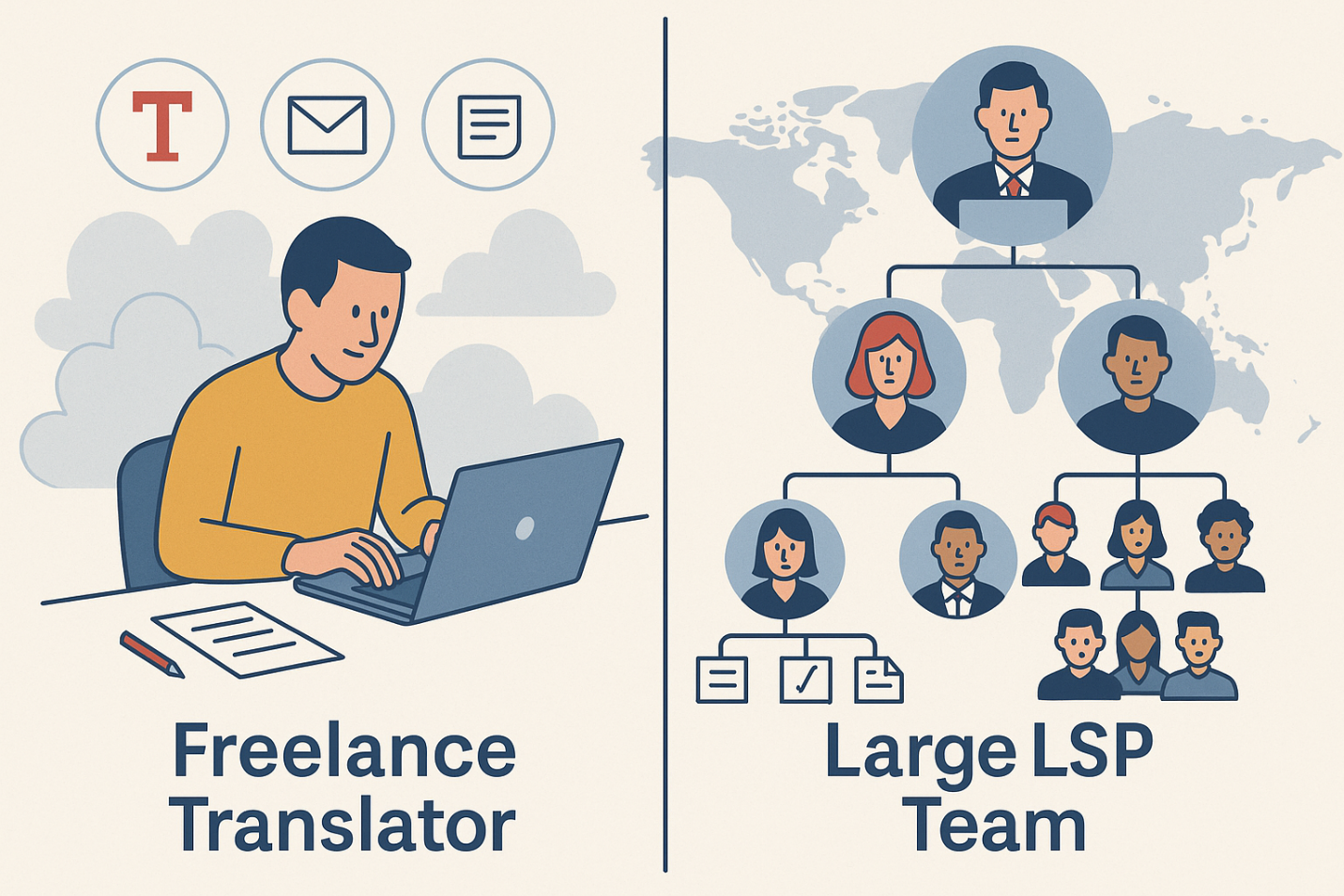This article stems from several instances where companies embark on the implementation of a translation business management system only to find halfway through that it "doesn't work as anticipated." We'll delve into the reasons behind these mismatches and provide guidance on how to sidestep such pitfalls.
Define what you want
.png)
Any management software is just a tool that automates your existing processes. So, logically, you need to have processes that can be automated. It is very unlikely that you may introduce new processes based on software functionality (although it may be a good idea). So just look at what you are doing in your translation company and think of what you want to be do be done faster. Put in the list of features you want to see, and then search for the system that fits it.
At times, upon evaluation, you might realize that what you truly need isn't a TBMS (Translation Business Management System) but rather a CRM (Customer Relationship Management), a standalone TMS (Translation Management System), or some other specialized system. It's essential to discern the exact needs of your operation to select the most suitable tool. We have already described differences between these tools here and here.
Conducting this research will prevent the uncomfortable scenario of sitting through a demo of a system that offers functionality you don't require.
Do not stick to the past, explore new

While all translation business management systems offer similar features (like managing clients, vendors, pricing, projects, job assignments, files, communication, finances, invoices, and process automation), each has its own foundational logic that dictates how elements interact within the system. The relationships between these elements and even the terminology used can vary significantly from one system to another.
For instance, terms like “project”, “job”, and “invoice” can have entirely different meanings across various systems. In some, you might generate a single invoice for each project (depending on its definition), whereas in others, multiple invoices can be issued for one project or multiple projects can be encompassed in one invoice. Additionally, some systems might allow a file to be split among several translators, resulting in multiple jobs, while this might not be feasible in others.
These differences may be fundamental and hardcoded into the system architecture, so you may need to understand the logic of the system to use it effectively, as it may work totally different from the system you used before. The challenges of adapting are inevitable, but if the new system is overall superior, they're worthwhile.
Transitioning effectively to a new translation business management system can be challenging if you merely attempt to replicate the steps from your previous system. While the desired outcome might be achievable in the new system, the methods or steps might differ. Instead of guessing, it's advisable to reach out to support. By describing your real-life objective, they can guide you on the appropriate procedures within their system.
Test and learn

Regardless of the buzz around a translation business management system, the allure of its marketing materials, or the recommendations from colleagues, never adopt it without a trial run. Since every translation company has unique needs, priorities, and experiences, hands-on testing is essential. And it's not just about evaluating the software and its features. Equally crucial is the quality of customer support. Even the most sophisticated system can prove challenging without the necessary guidance, especially during the initial stages of implementation.
Never expect perfect match

Of course you want the system that would 100% fit. But in real world, it is hardly possible. The reason is that every company, be it LSP or anything else, is unique, and your processes will surely differ from the other companies no matter how similar you are. You may have different corporate culture, management approach, individual responsibilities of each team member, local legal requirements and so on. It is hardly possible for the developers to foresee all possible variations of doing business.
While there are overarching strategies and objectives shared across companies, every Translation Business Management System (TBMS) is shaped by its initial development context. Typically, each TBMS starts with its design centered around the processes of a specific translation company, leaving an indelible mark of that inaugural user within the system. Yet, as the system undergoes further development, it adapts based on feedback from a broader range of potential and existing users. This evolution tends to steer the system towards a "statistically universal" trajectory, increasing its likelihood to meet the needs of a wider audience. However, if your specifications deviate significantly from the norm, there might still be gaps in functionality.
Even with substantial investment in creating your own system, there will inevitably be gaps. The world is constantly evolving, and as a result, system needs will shift over time. The initial version of your system will likely have only basic features, falling short of your ultimate vision. As development progresses, you'll continually uncover new deficiencies and areas for enhancement.
Accept the reality that no translation business management system is flawless, but some will align more closely with your needs than others. If a system fulfills 80% of your requirements, you're left with just 20% of challenges to address. Many of these issues can be rectified down the line, either through further system enhancements based on your feedback or by integrating supplementary tools. Holding out for the perfect system is essentially waiting indefinitely.





